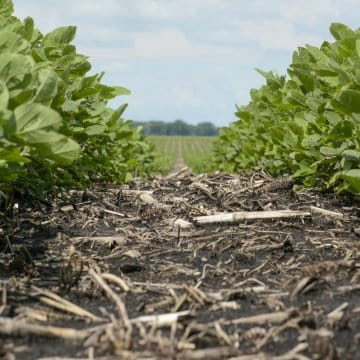
After surging nearly 13% during the eat-at-home early days of the pandemic, sales of organic food rose by less than 2% in 2021, as Americans abandoned pantry loading, said the Organic Trade Association (OTA) on Thursday. Sales of organic food totaled $57.5 billion last year, a $1 billion increase from 2020.
It was the slowest growth rate in more than a decade for organic, ordinarily one of the most dynamic segments of the food sector. The pandemic upended the food industry in 2020, driving consumers to the grocery store while shutting down restaurants and schools. Shoppers combated shortages by buying extra food when they could. There was a boom in home baking.
“Like every other industry, organic has been through many twists and turns over the last few years, but the industry’s resilience and creativity has kept us going strong,” said OTA chief executive Tom Chapman. “When pandemic purchasing habits and supply shortages began to ease in 2021, we saw the strongest performance from categories that were able to remain flexible, despite the shifting landscape.”
In releasing its annual report on the organic industry, the OTA said that in 2021, shoppers — instead of hoarding food as they had during the pandemic — returned to the familiar routine of buying food as they needed it. Food sales increased 1.8% from 2020, and nonfood sales were up 7%.
Fruits and vegetables, the largest sector for organic food, notched sales of $21 billion, up 4.5%. Fresh produce sales surged 6%, and dried beans, fruits, and vegetables rose 6.5%. Overall, 15% of U.S. fruit and vegetable sales last year were organic, said the OTA.
Processors are putting more packaging on organic produce because some shoppers believe it reduces the risk that there is coronavirus on their purchases. “It is yet unclear if this trend will continue, however, as organic food shoppers historically have preferred less packaging and plastic use,” said the OTA.
After soaring in 2020, sales of organic dairy and eggs retreated in 2021, as supply scares became less frequent, said the trade group. Tight supplies of organic feed contributed to higher prices and lower total sales, it said, although sales were still 11% larger than in 2019.
Sales of organic meat rose 2.5%, to nearly $2 billion. Organic poultry was the top performer in the category, up 4.7%, to more than $1 billion.
Sales of packaged and prepared food dropped 5%, “representing a shift away from pantry loading and toward more measured purchasing patterns,” said the OTA. Canned soups, nut butters, and pasta sauce, which rode the escalator of consumer demand in 2020, saw the largest decreases in 2021. However, baby food sales were up 11%, to $1.2 billion.
Snack sales, which fell in 2020, rebounded in 2021 as offices, schools, and stores reopened. Coffee sales also boomed, rising more than 5% “as Americans increasingly transitioned into hybrid and work-from-home models.”
With $2.3 billion in sales, textiles generated 40% of revenue for nonfood organic products, a category that also includes dietary supplements and personal care products.
